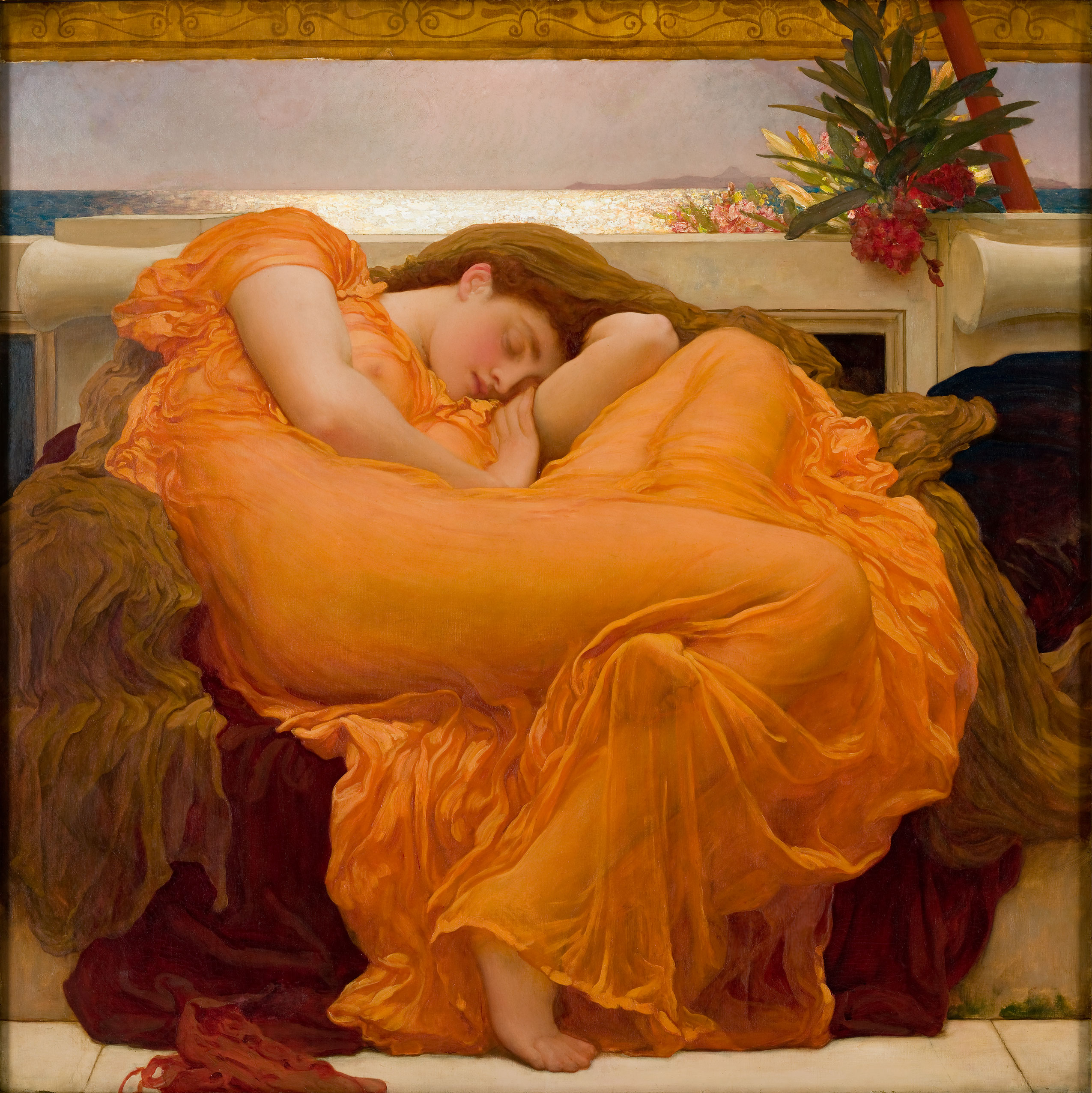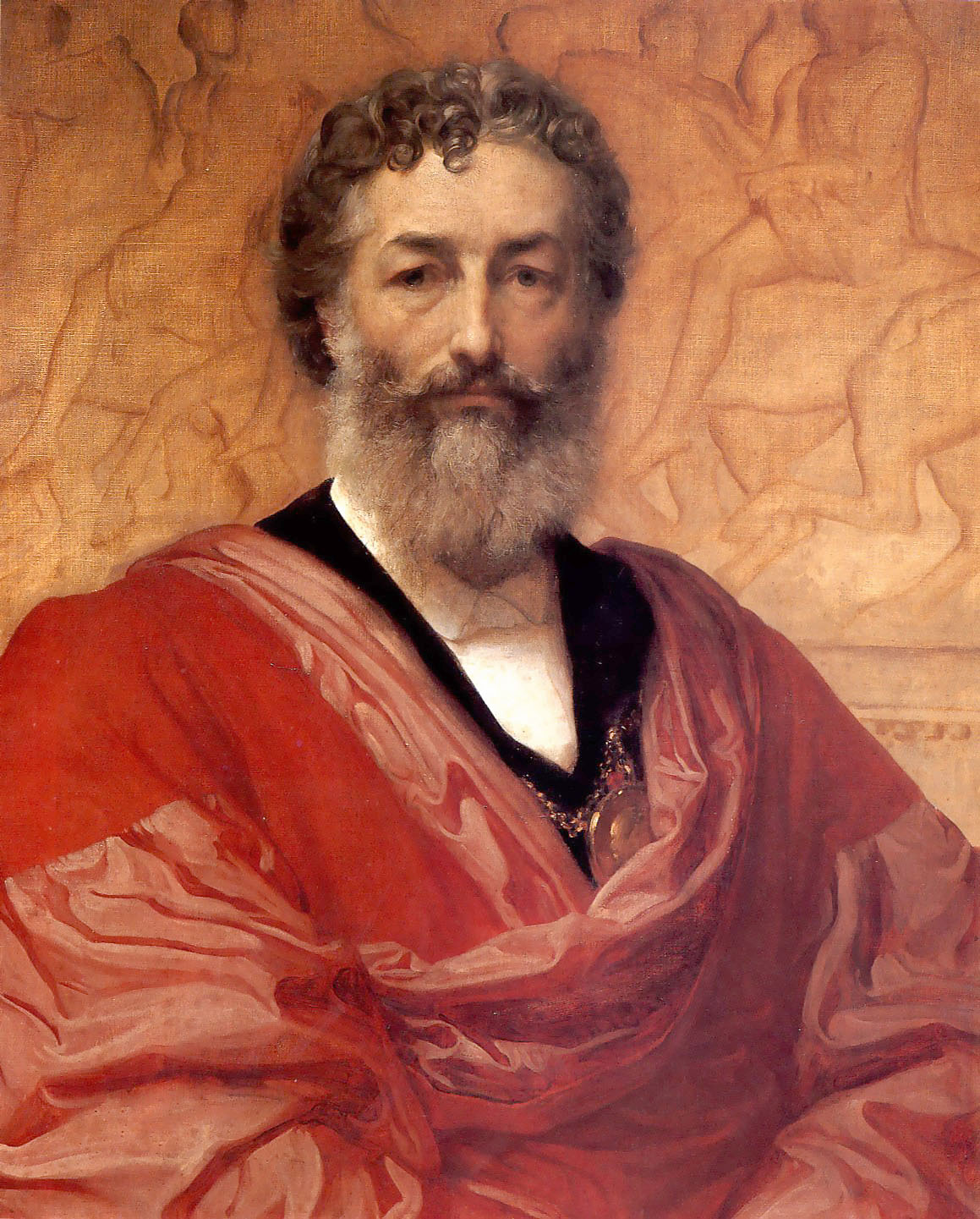We rarely feature the same piece of art twice. This time, we made an exception. Today's beautiful painting is sponsored by William Turnier in memory of his wife, Maria F. Turnier. Flaming June is the iconic painting of the Victorian. Around the turn of the century, art collector Samuel Courtauld called it “The most wonderful painting in existence … a gorgeous piece of flamboyance.” Some decades later, when the English composer Andrew Lloyd Webber asked for money from his family to buy Flaming June, his grandmother replied “I will not have Victorian junk in my flat.” So he did not buy it. Passing from one owner to the next as it was falling out of fashion, Flaming June at one point was boarded up behind the false panel of a chimney mantel in a house in Clapham Common on the outskirts of London. It disappeared for decades, until it was mysteriously rediscovered and resuscitated at a most unlikely time - in 1962, when Andy Warhol was painting Campbell soup cans, and when Victorian art was stigmatized for being prudish and sentimental.
The founder of the Museo de Arte de Ponce, Luis A. Ferré, would travel through Europe to buy works for the museum. When he saw Flaming June tucked away in a corner of the gallery of art dealer Jeremy Stephen Maas, he immediately fell in love with the painting. He only had to pay 2,000 pounds ($8,000 today, factoring inflation) to acquire it. Museo de Arte de Ponce is the place where the painting can be seen now. Who is this sleeping woman? What is she dreaming? Or is she pretending to be asleep? We can’t tell for sure. Flaming June is perhaps simply an ode to beauty, giving us the freedom to project whatever we want onto a sleeping woman who was once an artist’s favorite model. It gives ample opportunity to reflect upon one’s own projections.


 Frederic Leighton
Frederic Leighton